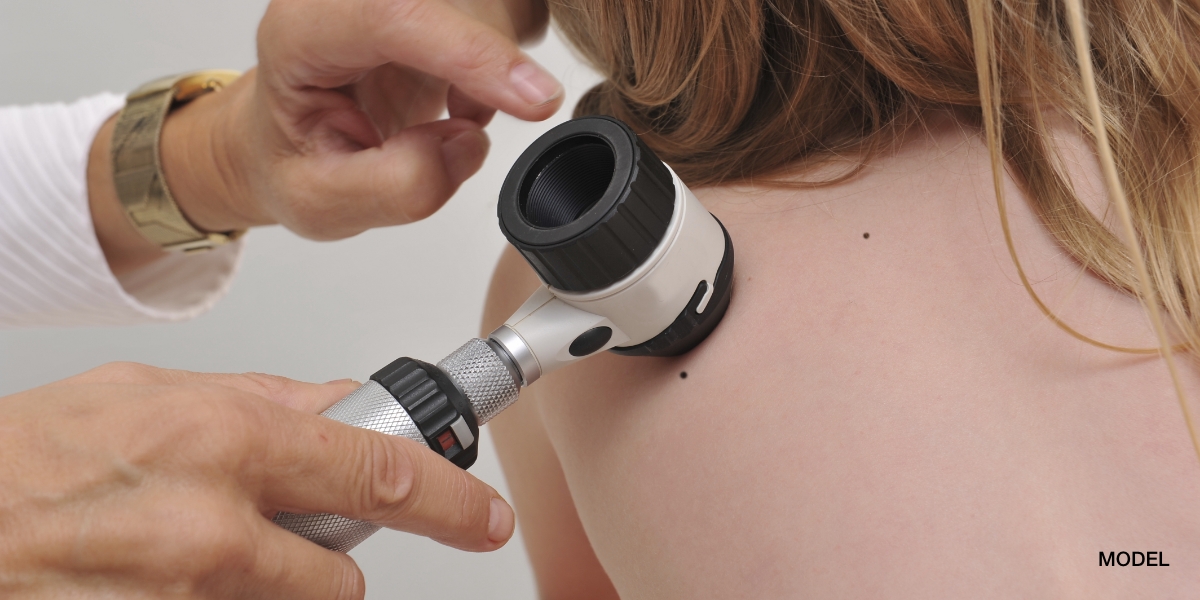Cryosurgery is the most common treatment method for actinic keratoses. Cryosurgery involves the application of liquid nitrogen to an actinic keratosis. In my practice, I use a cryogun which emits a controlled spray of liquid nitrogen onto the actinic keratosis. This is called the “open spray” technique and is the type favored by most dermatologists. Some older dermatologists still use a method where a cotton tip applicator is dipped into a cup of liquid nitrogen and then the frozen end of the cotton tip applicator is held against the actinic keratosis for approximately 10 seconds. This is also a very effective technique but is much more cumbersome. I do find that the “dip” technique is very effective for young children who are frightened by the sight or sound of the cryogun. The application of liquid nitrogen to an actinic keratosis essentially creates a localized controlled frost bite in which the pre-malignant cells are destroyed. It is not the initial freezing that destroys the actinic keratosis, but the slow thawing of the frozen lesion. Patients describe the sensation as a “slight sting” and the treated lesion typically itches for several hours. Over the course of two weeks, the treated lesion becomes crusty and black, sometimes developing a blister. No wound care is needed and patients can wash the treated area using their normal hygiene regimen. If the treated lesions are bothersome, Vaseline can be applied to them. The treated lesion usually falls off the skin after a week leaving new pink appearing skin, which ultimately blends in with the surrounding skin usually leaving no evidence of the actinic keratosis and minimal to no scarring. Patients sometimes ask if the over the counter spray or dry ice would work on their actinic keratoses. These are ineffective treatment modalities since liquid nitrogen is so much colder (-197 degrees Celcius), whereas OTC spray is -30 degrees Celcius and dry ice is -79 degrees Celcius. Cryosurgery is my treatment of choice for actinic keratoses.
August 19, 2010

Medically reviewed by Anthony J. Perri, M.D.
You May Also Like



Request a Consultation (Sidebar)
Recent Posts
Categories
- Uncategorized (512)
Tags
acne (6)
acne treatment (3)
acne vulgaris (2)
basal cell carcinoma (2)
biopsy (3)
cold urticaria (1)
common skin conditions (11)
dermatologist (15)
dermatology (7)
dr. perri (8)
dry skin (1)
eczema (2)
filiform (1)
health (3)
Herpes (1)
herpessimplex (1)
hives (2)
indentification (1)
keratosis pilaris (1)
Lichen Planopilaris (1)
melanoma (2)
moles (3)
periungual (1)
perri dermatology (10)
prevention (2)
rashes (2)
rosacea (3)
rosacea therapy (2)
skin cancer (6)
skin cancer screening (5)
skin care (2)
skin checks (8)
skin condition (6)
skin conditions (8)
skin damage (2)
skin exam (8)
summertime (3)
sunburn (3)
sunburns (2)
Sunprotection (1)
sunscreen (2)
virus (1)
warts (2)
why perri dermatology (3)
woodlands dermatologist (6)
